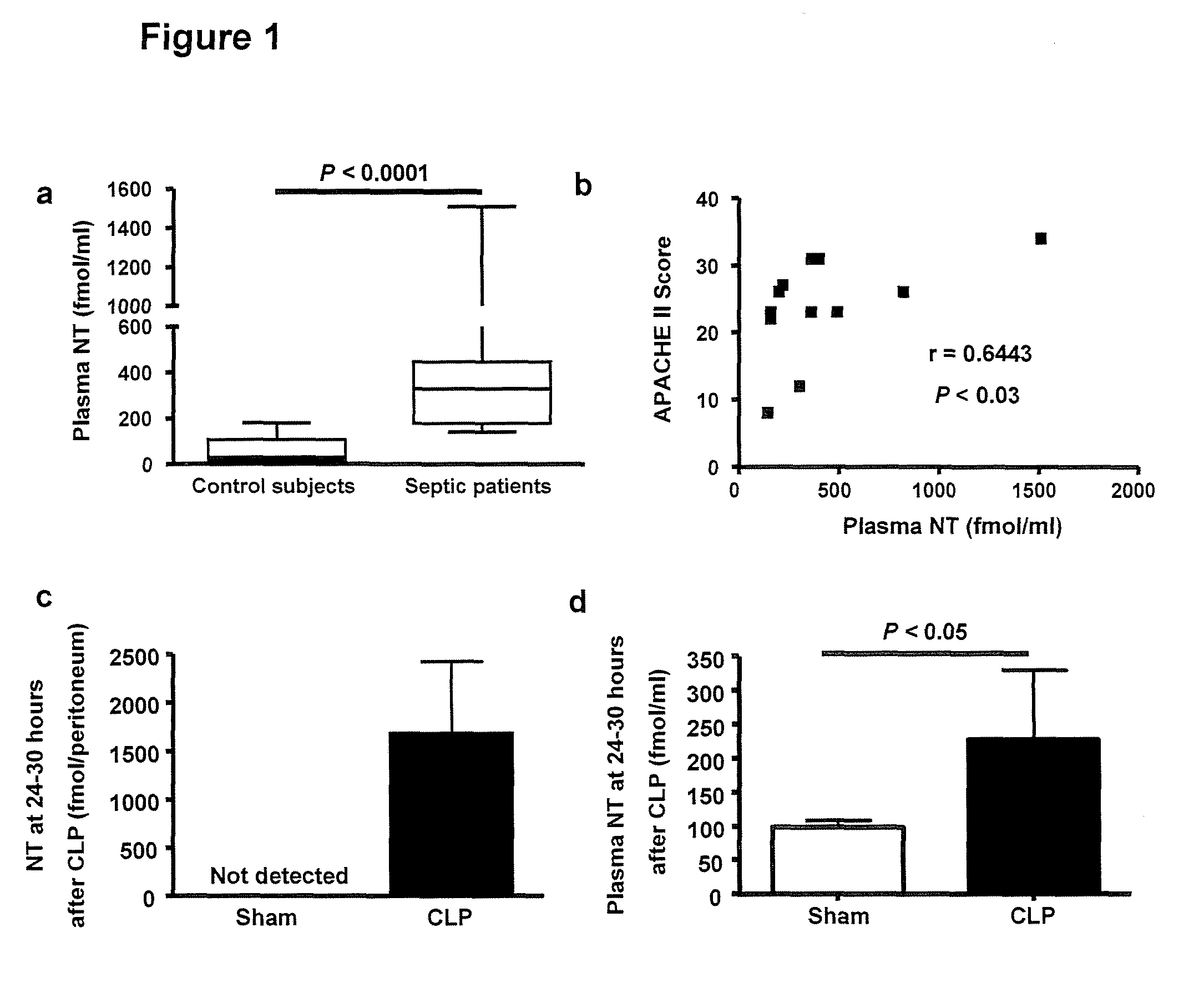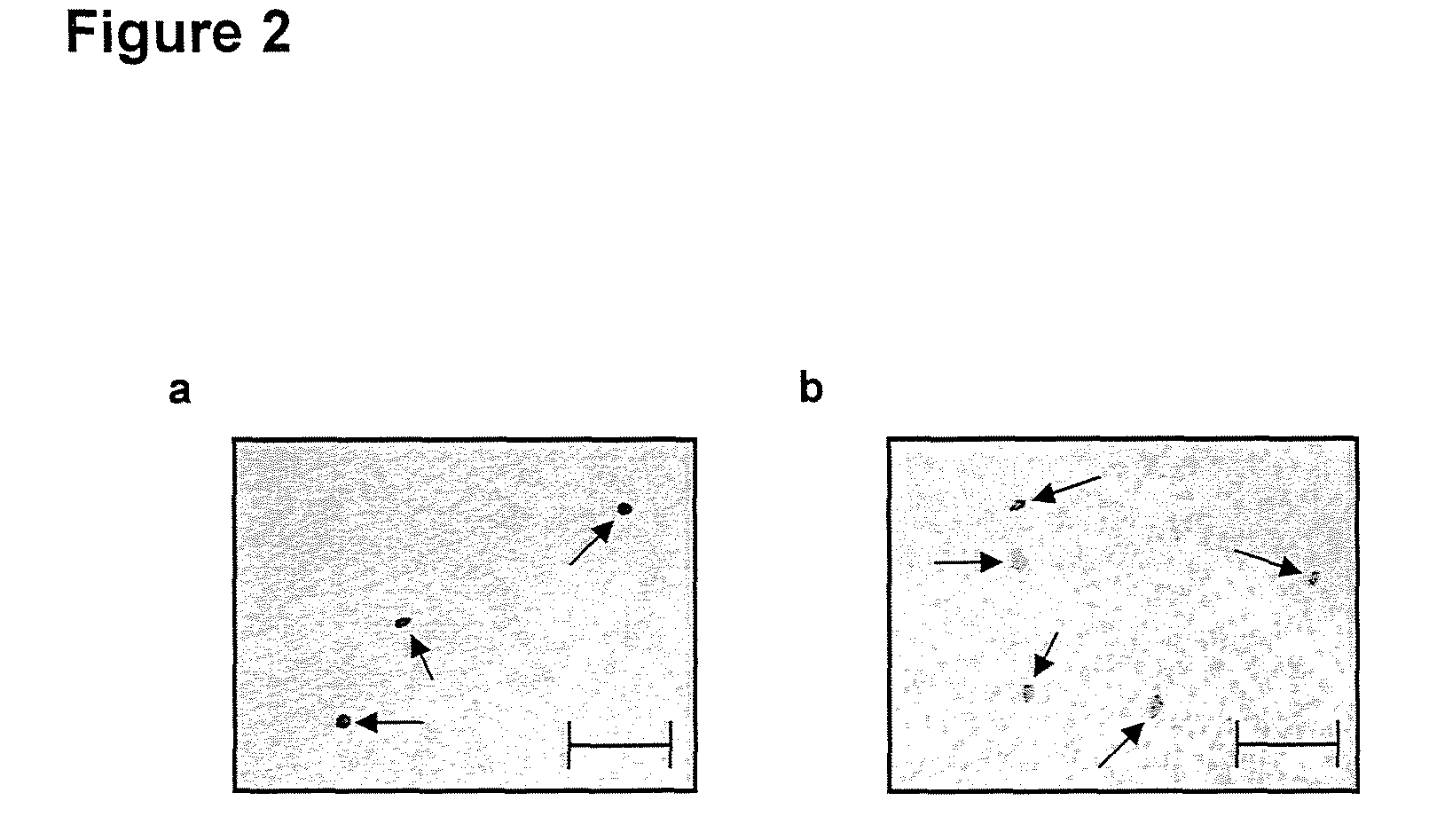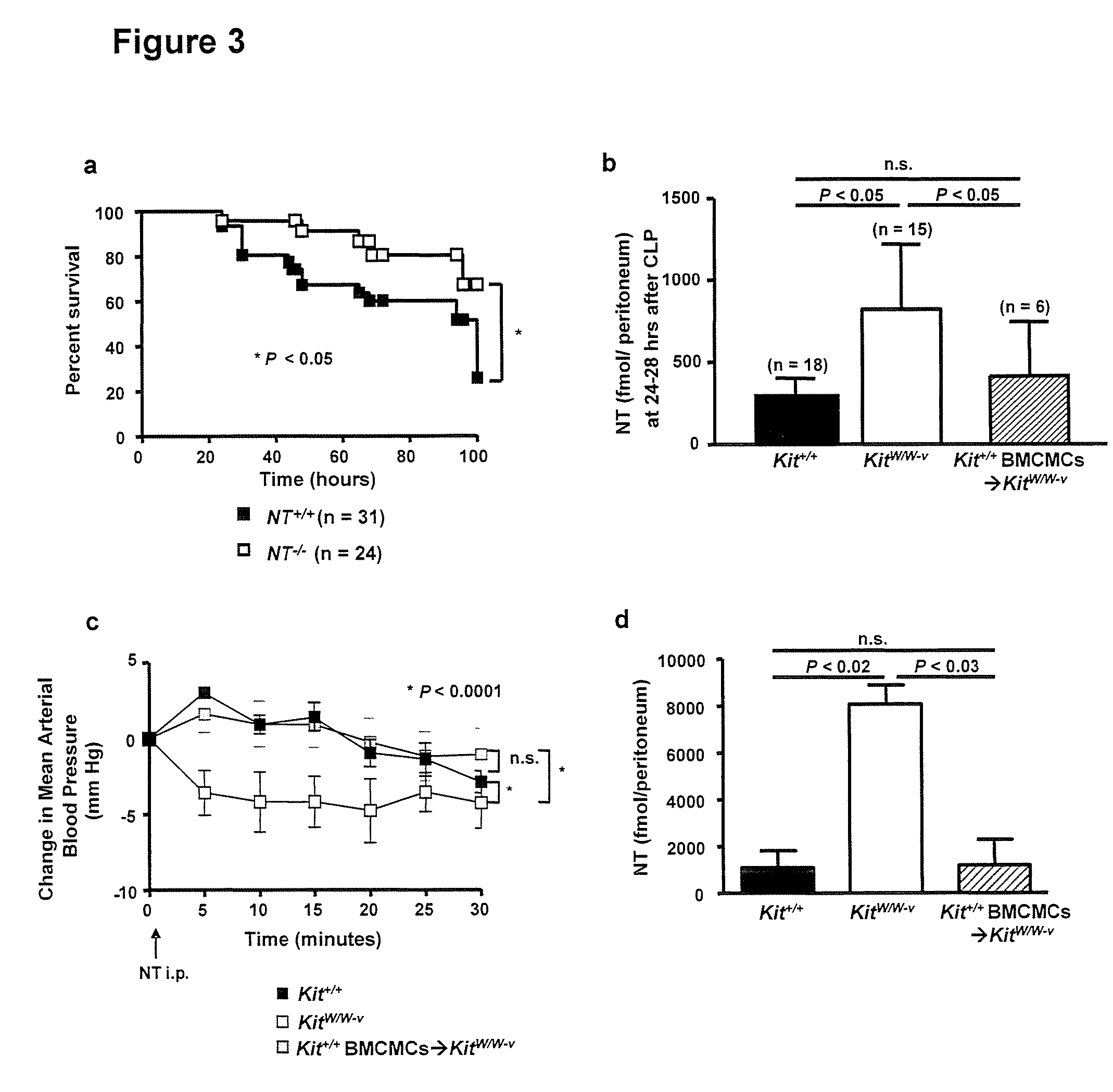Neurotensin as a marker and therapeutic target for sepsis
a technology of sepsis and neurotensin, which is applied in the field of sepsis sepsis sepsis marker and sepsis therapy target, can solve the problems of reducing the perfusion of organs, affecting the kidneys and brain, and complicating efforts to understand disease pathogenesis, so as to improve the survival rate of patients, enhance survival, and reduce the concentration of neurotensin
- Summary
- Abstract
- Description
- Claims
- Application Information
AI Technical Summary
Benefits of technology
Problems solved by technology
Method used
Image
Examples
example 1
[0107]Sepsis is a complex, incompletely understood and often fatal disorder, typically accompanied by hypotension, that is considered to represent a dysregulated host response to an infection. Neurotensin (NT) is 13-amino-acid peptide that, among its multiple effects, induces hypotension. It was found that plasma concentrations of NT are increased in humans with sepsis and in mice after caecal ligation and puncture (CLP), a model of sepsis. In mice, mast cells can degrade NT through neurotensin receptor 1- and neurolysin-dependent mechanisms, diminish the hypotensive effects of NT, and reduce intraperitoneal NT concentrations and improve survival after CLP. These findings show that mast cells can regulate NT concentrations in mice, and identify NT as a biomarker and therapeutic target in sepsis.
[0108]Plasma concentrations of NT were markedly elevated in patients with sepsis (median: 330 fmol / ml [range: 142-1508 fmol / ml, n=12], versus a median of 30 fmol / ml [range: 13.8-180 fmol / ml, ...
example 2
NT Contributes to Mortality During Severe CLP
[0139]A study was done comparing the importance of neurotensin (NT) in survival in moderate versus severe caecal ligation and puncture (CLP). Although the survival of wild type and NT-deficient mice was not significantly different after moderate CLP (62% vs. 50% survival for NT+ / + and NT− / − mice, respectively, Pa), NT− / − mice exhibited significantly enhanced survival after severe CLP compared to that of the littermate control (NT+ / +) mice (56% vs. 25% survival by 1 week after CLP, respectively, Pb). Moreover, NT+ / + mice exhibit lower mean arterial pressure (MAP) (55.9±4.9 mmHg) than did NT− / − mice (76.5±3.5 mmHg) after severe CLP (Pc). These results indicate that NT is one of the multiple mediators responsible for the drop in systemic blood pressure (BP) observed during the severe CLP model of sepsis.
[0140]As shown in FIG. 15a, NT levels are much lower in wild type mice experiencing moderate CLP (208±48 fmol / peritoneum) than in those subj...
example 3
[0141]Expression of neurotensin receptor 1 (Ntsr1), but not neurotensin receptor 2 (Ntsr2), contributes to increased mortality after severe CLP in mice (7% vs. 58% survival for Ntsr+ / + vs. Ntsr1− / − mice, respectively, after severe CLP, P− / − mice [8%] was not significantly different from that of Ntsr+ / + mice, P=0.39) (FIG. 16). This genetic evidence strongly implicates Ntsr1 in the pathway by which increased amounts of NT can impair survival in this model of sepsis.
[0142]Treatment of mice subjected to moderate CLP with SR142948A (a non-selective antagonist of Ntsr1 and Ntsr2) significantly improved the survival of mast cell-deficient KitW / W-v mice (FIG. 17a) but not Kit+ / + wild type mice (FIG. 17b). This result reflects, at least in part, the higher levels of NT that developed in mast cell-deficient vs. wild type mice subjected to moderate CLP (FIG. 16b). However, in severe CLP, treatment with SR142948A also significantly improved the survival of wild type mice (FIG. 17b).
[0143]Altho...
PUM
| Property | Measurement | Unit |
|---|---|---|
| body temperature | aaaaa | aaaaa |
| body temperature | aaaaa | aaaaa |
| temperature | aaaaa | aaaaa |
Abstract
Description
Claims
Application Information
 Login to View More
Login to View More - R&D
- Intellectual Property
- Life Sciences
- Materials
- Tech Scout
- Unparalleled Data Quality
- Higher Quality Content
- 60% Fewer Hallucinations
Browse by: Latest US Patents, China's latest patents, Technical Efficacy Thesaurus, Application Domain, Technology Topic, Popular Technical Reports.
© 2025 PatSnap. All rights reserved.Legal|Privacy policy|Modern Slavery Act Transparency Statement|Sitemap|About US| Contact US: help@patsnap.com



